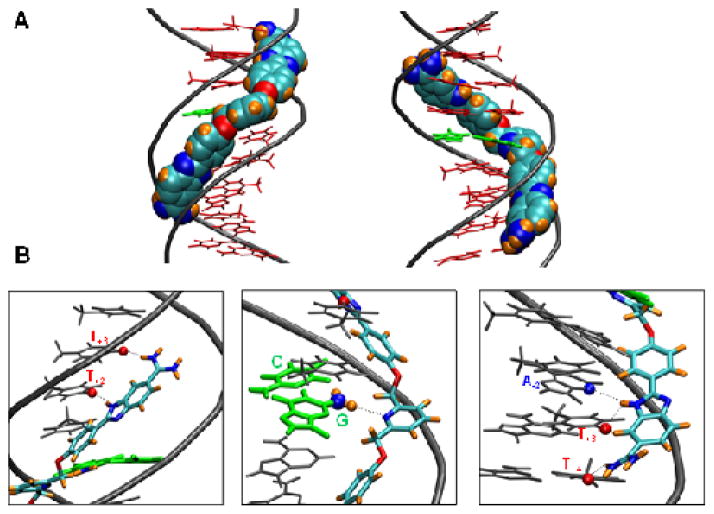Figure 5.
Molecular docking model of DB2120 with the A4GT4 sequence. (A) The model represents the minor (left) and major (right) groove views of DB2120 with A4GT4 sequence. The A•T DNA bases are represented as stick models in red and the central G•C bp is green. The DNA backbone is represented as a tube in grey color. DB2120 is represented in a space-filling model with the carbons light blue, nitrogen dark blue, hydrogens orange and oxygen red. (B) Important interactions between different sections of DB2120 and DNA are illustrated. The central G•C bp is used as the reference for base numbering of the leading and complementary strands. The benzimidazole ring NH and the amidine unit at the top of DB2120 in this orientation forms strong interactions with the carbonyl groups of T+2 and T+3 bases in the minor groove of the leading strand (left). The pyridine nitrogen makes strong interactions with the G-NH2 (ball and stick) in the minor groove (middle). The benzimidazole NH at the bottom end forms bifurcated interactions with A-2 N3 on the 5′-AAACTTT-3′ strand and T+3 carbonyl groups of the 5′-AAAGTTT-3′ strand, respectively. The amidine unit forms strong interactions with the carbonyl group of T+4 of the AAACTTT strand (right). All the interactions contribute to the overall stability of complex formation with the pyridine ring conferring G•C recognition as it was designed to do.

